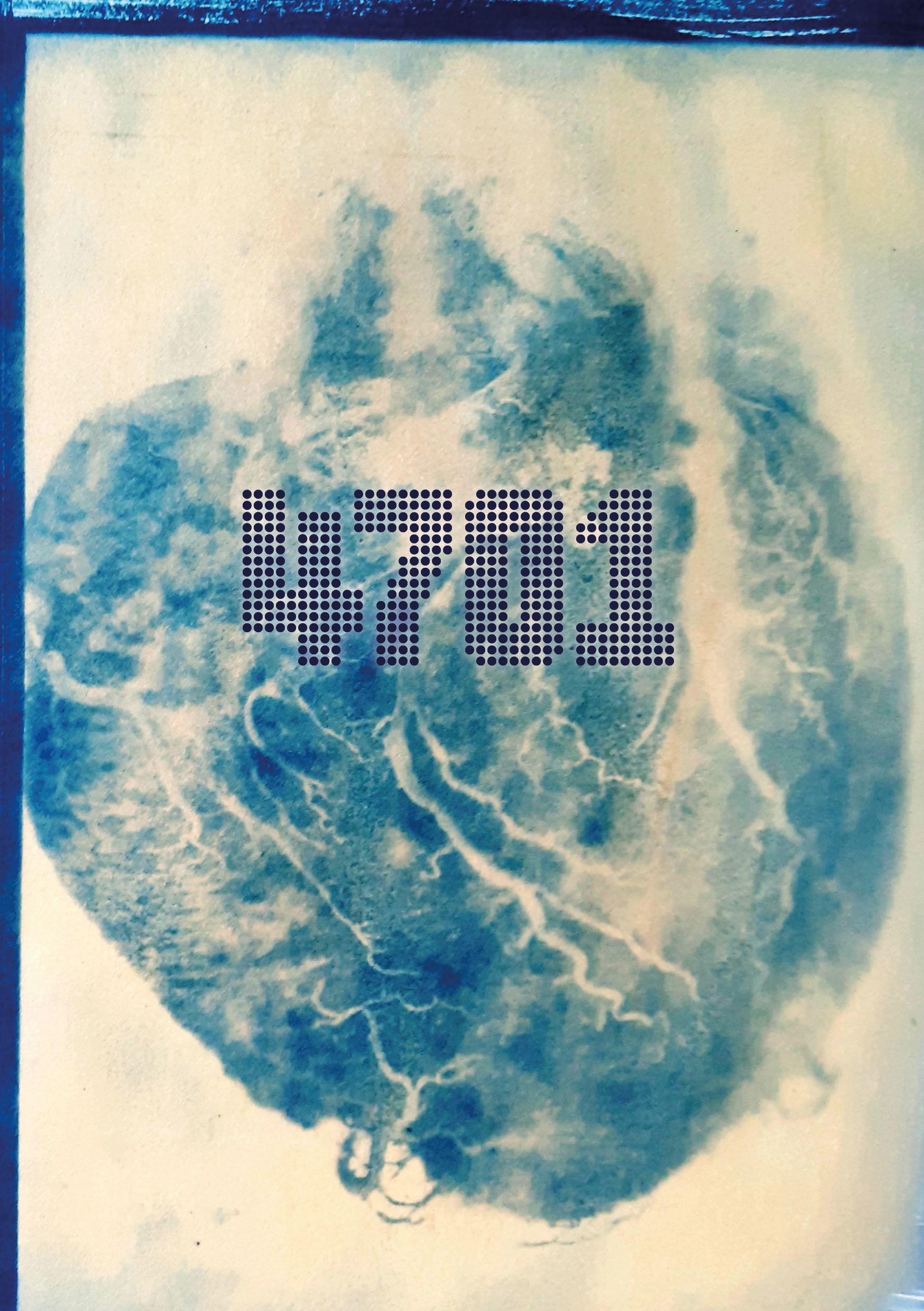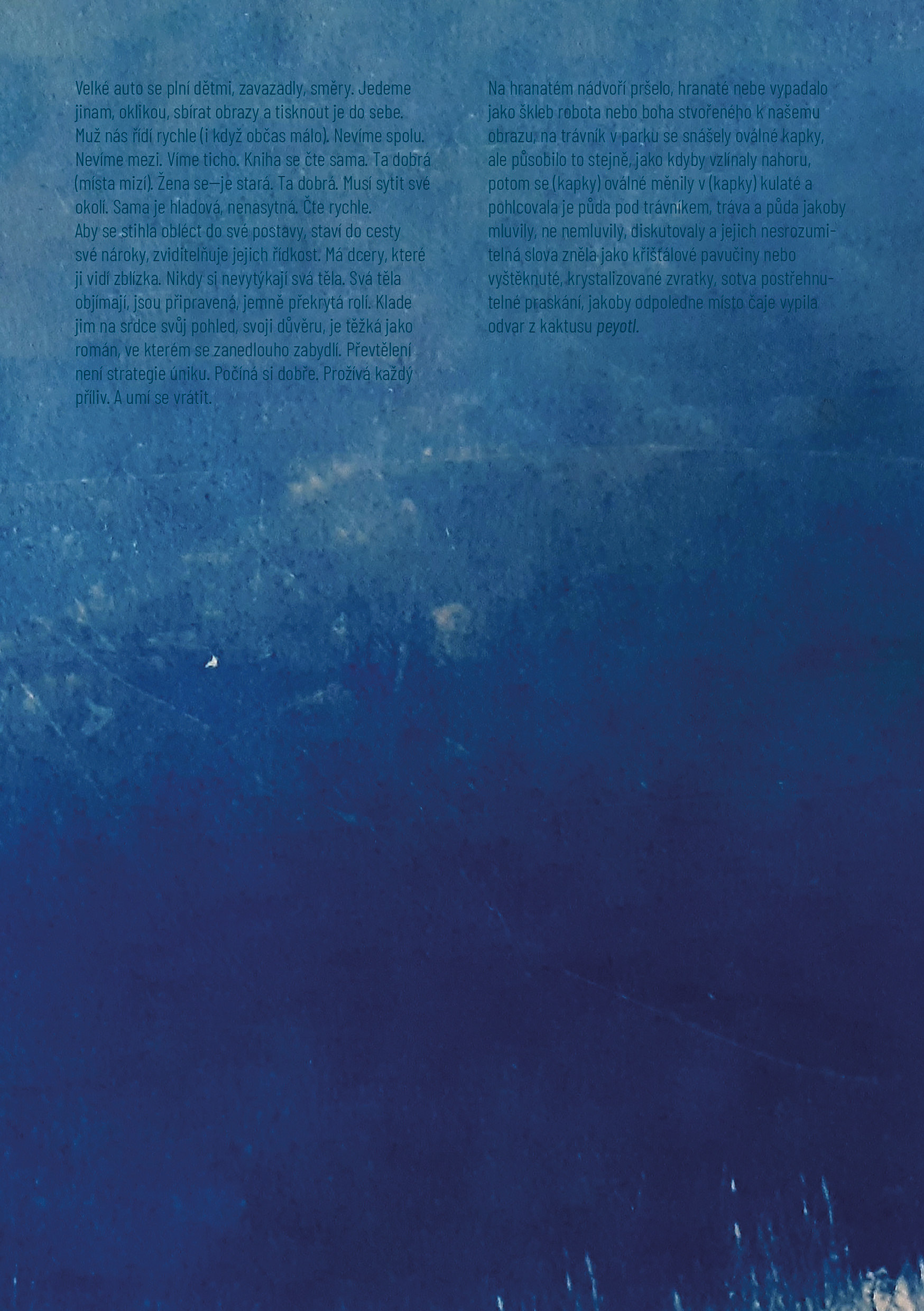“When the medusa of this species is physically damaged or experiences stresses such as starvation, instead of dying it shrinks in on itself, reabsorbing its tentacles and losing the ability to swim. It then settles on the seafloor as a blob‑like cyst.
Over the next 24‑36 hours, this blob develops into a new polyp — the jellyfish’s previous life stage — and after maturing, medusae bud off. … The process behind the jellyfish’s remarkable transformation is called transdifferentiation. … It essentially reprogrammes the medusa’s specialised cells to become specialised polyp cells, allowing the jellyfish to regrow themselves in an entirely different body plan to the free‑swimming jellyfish they had recently been.”
Emily Osterloff, „Turritopsis dohrnii: The Secret to Cheating Death“ od Natural History Museum, London (nhm.ac.uk)
A large car is being filled with children, luggage, directions. Among them, the two of us. We travel elsewhere, in a detour, to collect images and imprint them inside. The man drives us fast (though descretly sometimes). We don't know together. We don't know between. We know silence. The book reads itself. The good one (places reappear). The woman plants seeds/ages. The good one. She has to feed her surroundings. She herself is hungry, insatiable. Reads fast. In order to have time to dress in her character, she puts her demands in the way, making their thinness visible.
She has daughters who see her closely. They never criticize their bodies. They embrace them, being ready, gently covered with their roles. She places her gaze, her trust on their hearts, she is as heavy as a novel, in which she will settle soon. Reincarnation is not an escape strategy. She is doing well experiencing every tide. And she knows how to come back.
an intimate travelogue along Robert Bolano's novel 2666 - in progress
Bretagne, France, 2023

